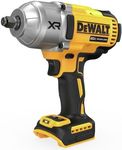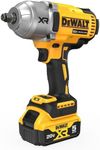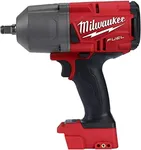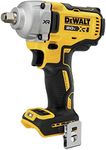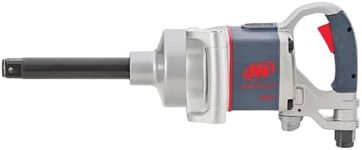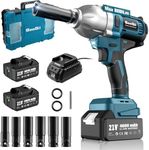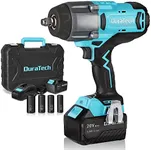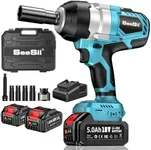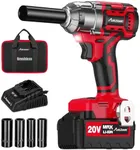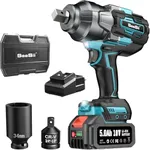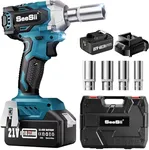Buying Guide for the Best Electric Impact Wrenches
Choosing the right electric impact wrench can make a significant difference in your work efficiency and ease. Whether you're a professional mechanic or a DIY enthusiast, understanding the key specifications of electric impact wrenches will help you make an informed decision. Here are the essential specs to consider and how to navigate them to find the best fit for your needs.TorqueTorque is the rotational force that the wrench can apply to a bolt or nut. This spec is crucial because it determines the wrench's ability to loosen or tighten fasteners. Torque is usually measured in foot-pounds (ft-lbs) or Newton-meters (Nm). For light-duty tasks, such as automotive work, a wrench with 100-300 ft-lbs of torque is sufficient. For heavy-duty applications, like construction or industrial work, you might need a wrench with 400 ft-lbs or more. Consider the type of work you'll be doing to choose the appropriate torque level.
Speed (RPM)Speed, measured in revolutions per minute (RPM), indicates how fast the wrench can rotate. Higher RPMs mean faster operation, which can be beneficial for tasks requiring quick fastening or loosening. Electric impact wrenches typically offer speeds ranging from 1,000 to 3,000 RPM. For general use, a mid-range speed of around 2,000 RPM is usually adequate. If you need to complete tasks quickly or work with larger bolts, opt for higher RPMs.
Drive SizeDrive size refers to the diameter of the wrench's anvil, where sockets are attached. Common drive sizes are 1/4-inch, 3/8-inch, 1/2-inch, and 3/4-inch. The drive size you need depends on the size of the fasteners you'll be working with. For automotive and light-duty tasks, a 3/8-inch or 1/2-inch drive is typically sufficient. For heavy-duty applications, such as large machinery, a 3/4-inch drive may be necessary. Match the drive size to your specific needs to ensure compatibility with your sockets.
WeightThe weight of the impact wrench can affect your comfort and ease of use, especially during extended periods of work. Lighter wrenches are easier to handle and reduce fatigue, making them ideal for overhead or repetitive tasks. Electric impact wrenches can range from 3 to 10 pounds. If you plan to use the wrench frequently or for long durations, opt for a lighter model. For occasional use or heavy-duty tasks, a heavier wrench may be acceptable.
Power SourceElectric impact wrenches can be corded or cordless. Corded models offer continuous power and are generally more powerful, making them suitable for heavy-duty tasks. However, they require access to an electrical outlet. Cordless models provide greater mobility and convenience, powered by rechargeable batteries. They are ideal for on-the-go use or areas without easy access to power. Consider where and how you'll be using the wrench to decide between corded and cordless options.
Battery Life (for cordless models)Battery life is an important consideration for cordless impact wrenches. It determines how long you can use the tool before needing to recharge. Battery life is typically measured in ampere-hours (Ah). Higher Ah ratings mean longer battery life. For occasional use, a battery with 2-3 Ah may be sufficient. For extended or heavy-duty use, look for batteries with 4 Ah or more. Ensure the battery life aligns with your work requirements to avoid frequent interruptions.
ErgonomicsErgonomics refers to the design and comfort of the wrench. Features like a comfortable grip, balanced weight distribution, and vibration reduction can significantly impact your user experience. Good ergonomics reduce strain and fatigue, making the tool easier to use for extended periods. When choosing an impact wrench, consider models with ergonomic designs that fit comfortably in your hand and offer ease of use.
